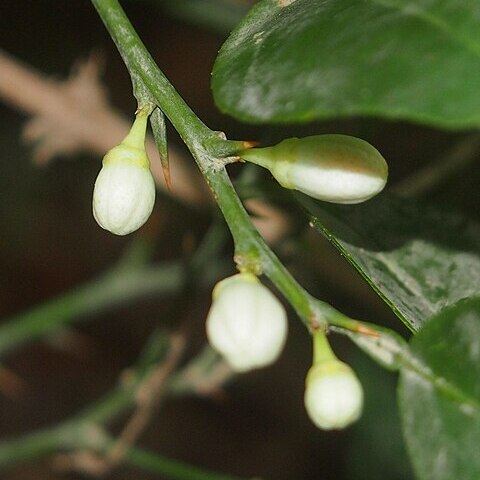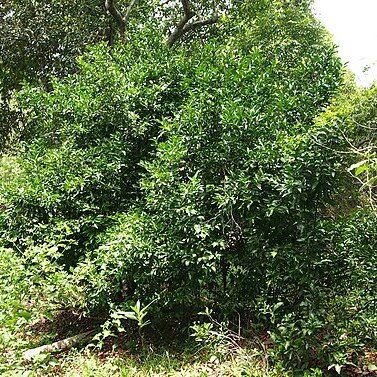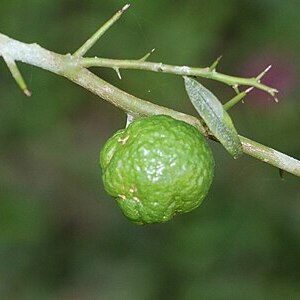A tall shrub. They grow 9-18 m tall and spread 2-5 m across. It has a dense canopy of leaves. The branches are thorny. The leaves are 0.5-5.5 cm long by 0.5-3 cm wide. They are oval and leathery. They are dark green above and paler underneath. The edges are wavy towards the tip. The flowers are 1 cm across. They are white or pink and have a scent. They occur singly in the axils of leaves. Fruit are 2.5-8 cm across. They have rough greenish yellow skin. The pulp of the fruit is pale green. The skin is up to 7 mm thick.




